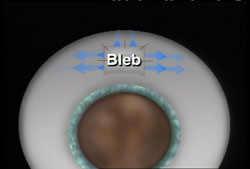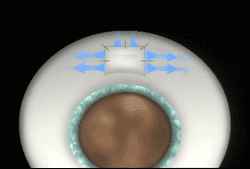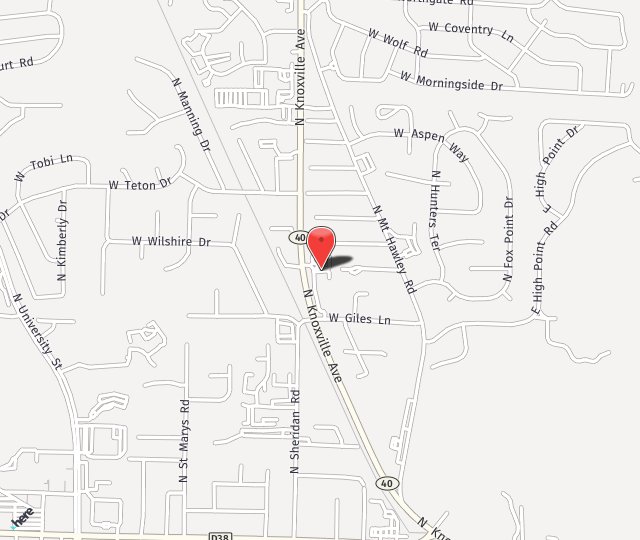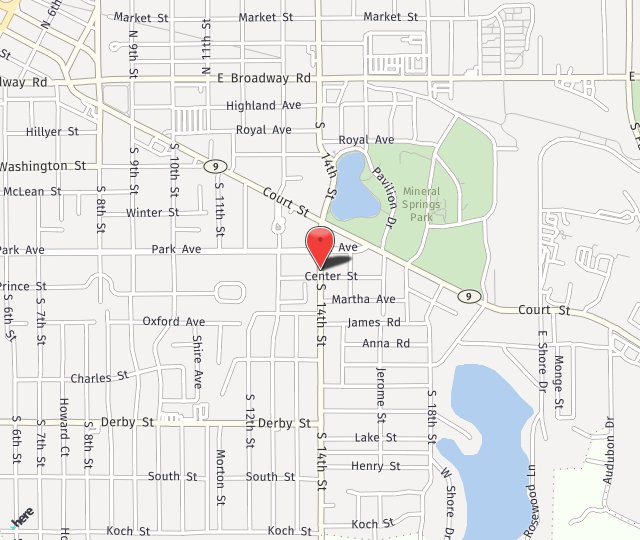Filtration surgery, also called trabeculectomy, is a treatment for several types of glaucoma including open-angle and narrow-angle glaucoma. It is often performed on patients who have not responded well to medication or laser treatment such as ALT or SLT. Filtration surgery usually provides a dramatic reduction in pressure within the eye.
Filtration surgery is for those:
- who have been diagnosed with glaucoma
- whose doctor has determined that filtration surgery is an appropriate treatment for their condition

A small channel, or 'bleb' is created to allow fluid to drain from the eye. (See animation below.)
What to expect on surgery day:
You will arrive at the surgery center 30-60 minutes prior to your procedure. Once you have been checked-in and settled comfortably, you will be prepared for surgery. The area around your eyes will be cleaned and a sterile drape will be applied. You may be given a sedative to help you relax. Your eye will be numbed with topical or a local anesthesia. When your eye is completely numb, an eyelid holder will be placed between your eyelids to keep you from blinking.
Using advanced microsurgical techniques and equipment, your doctor will create a tiny new channel between the inside of your eye and the outside of your eye. A small section of tissue will be removed, creating a channel, to allow fluid to pass through the blocked drainage network onto the white (sclera) of the eye. The incision will be closed with small stitches and covered with the thin outer tissue of the eye, called the conjunctiva. Blood vessels in the conjunctiva will carry the draining fluid away.

To keep the drainage channel open, your doctor may apply an extremely small dose of a chemotherapeutic agent to the new filter. Your eye pressure will be checked shortly after your procedure and drops may be prescribed to alleviate any soreness or swelling inside the eye. You should go home and relax for the rest of the day. Most patients resume normal activities within a few days.
Follow-up visits are necessary to monitor your eye pressure. It may take a few weeks to see the full pressure-lowering effect of this procedure, and adjustments may need to be made to the filter during this period. These adjustments may include:
- injection of small amounts of chemotherapeutic agents
- loosening or removal of one or more stitches
- finger pressure to the eye to force fluid through the filter
- numbing the eye and opening the channel slightly with a fine instrument
- placing a contact lens over the eye
Realistic Expectations:
The success rate for this type of surgery is approximately 80 percent in cases where no surgery has been done on the eye before. However, everyone's eyes are unique and many people do require further treatments. In more difficult cases where even filtration surgery doesn't prevent damage to the ocular nerve, it may be necessary to perform other types of procedures.
Serious complications with filtration surgery are extremely rare, but like any surgical procedure, it does have some risks. Going to a specialist experienced in filtration surgery can significantly minimize the risks.
If you and your doctor decide that filtration surgery is an option for you, you will be given additional information about the procedure that will allow you to make an informed decision about whether to proceed. Be sure you have all your questions answered to your satisfaction.
If you would like more information about this procedure you can make an appointment or contact the office for additional information.


